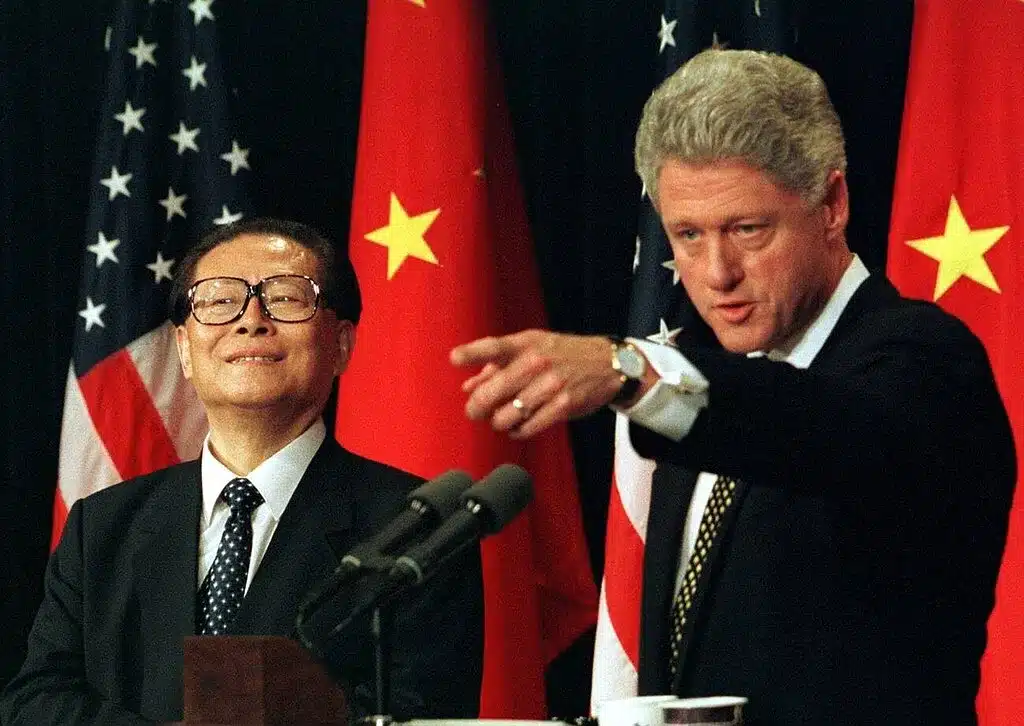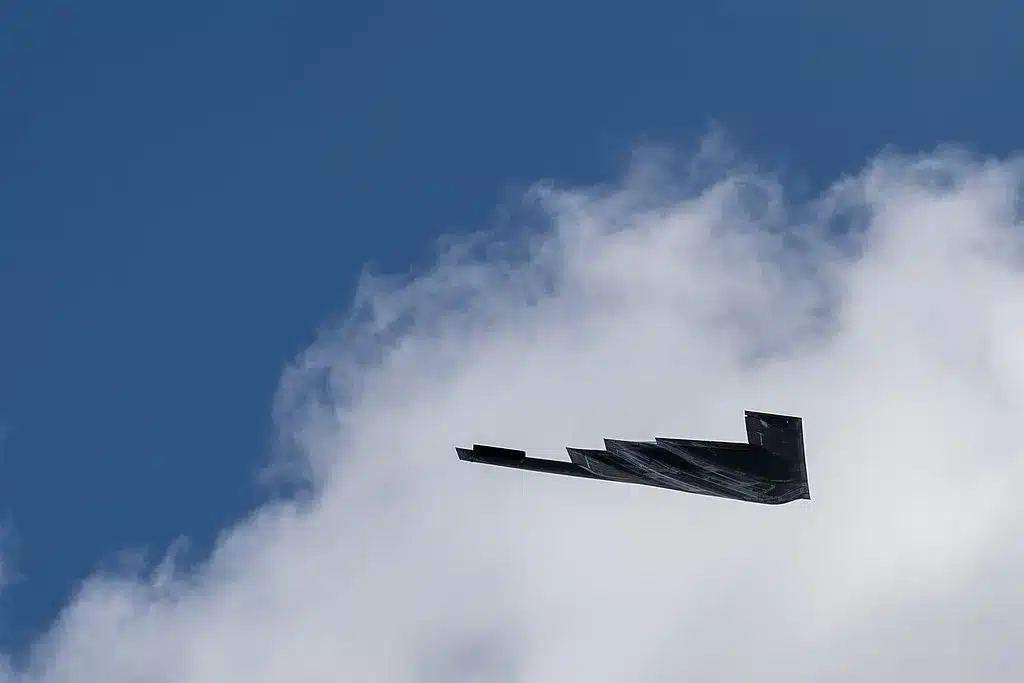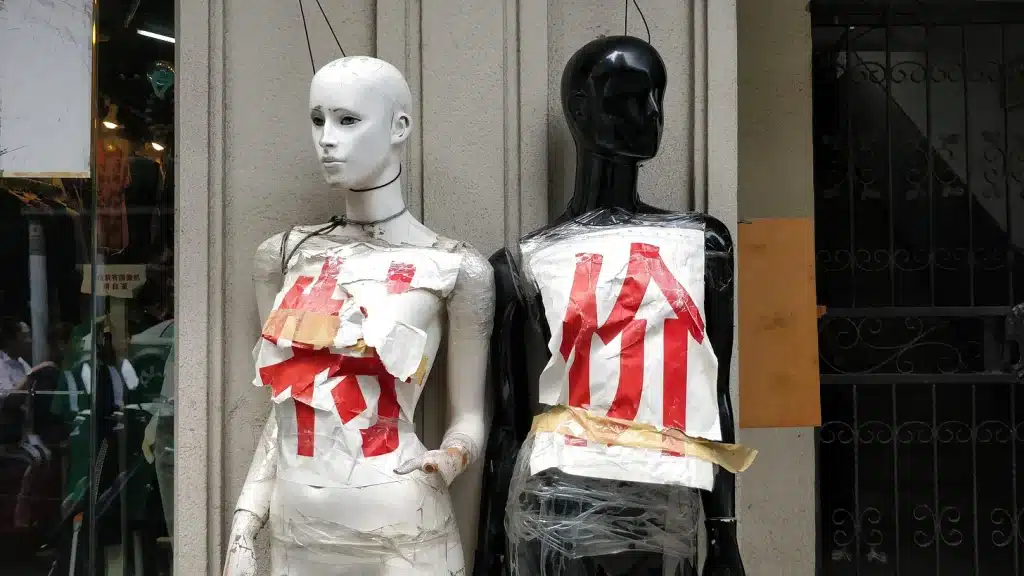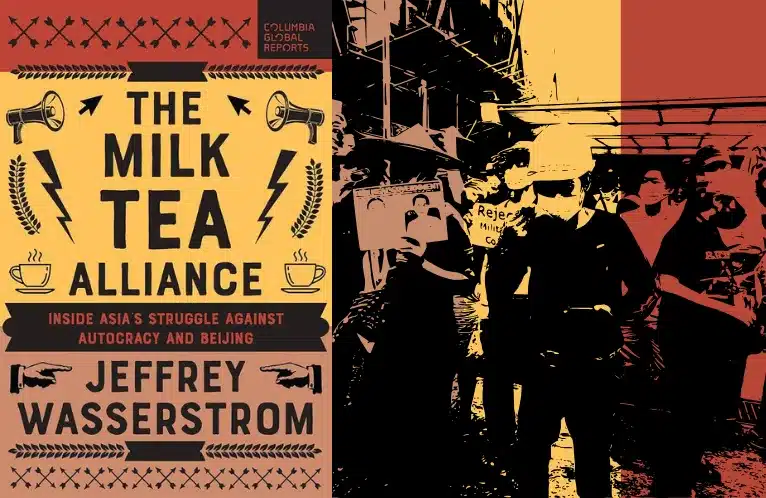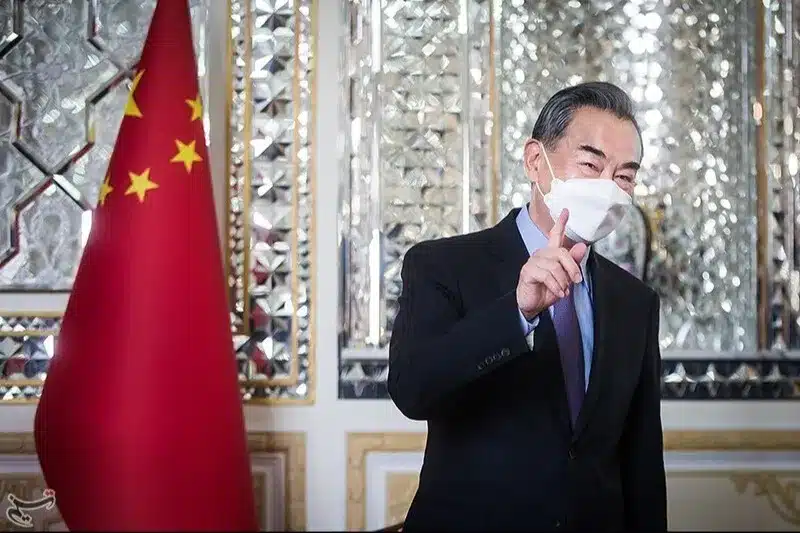The China-Pakistan Economic Corridor: Understanding American and Pakistani Perceptions
Since Chinese President Xi Jinping announced the China-Pakistan Economic Corridor (CPEC) as the flagship project of China’s Belt and Road Initiative (BRI) in 2015, there have been sparks of optimism about the revival of the Pakistani economy devastated by two decades of terrorism and violent extremism. The project is by far the most ambitious undertaking by Beijing in any individual country and entails more than $60 billion dollars of investment from China to build power generation plants, roads and railways, ports, fiber optic cables, and other infrastructure projects in Pakistan.
Since its launch, however, debates over the economic, financial, political, and strategic consequences of CPEC continue to brew both within and outside Pakistan.
To many in Pakistan, the project is believed to be a ‘game changer’ for Pakistan’s economy and will revive robust economic growth through enhanced employment, infrastructure, and other socio-economic opportunities. To many outside, however, the promised transformational gains for both China and Pakistan have raised concern, especially in the United States, about China’s growing influence in the country, the costs of the project for Pakistan, and its consequences for the United States.
In 2015, a few Memorandums of Understanding (MoUs) were signed between China and Pakistan and investment began flowing in the same year for the ‘Early Harvest’ projects valued at $28 billion out of the initial total of $45 billion (which was later increased to $62 billion by 2020). Seventy percent of this amount (or $35 billion) entered Pakistan as Foreign Direct Investment (FDI) while the rest consists of non-concessional loans. An estimate suggests that Pakistan’s annual return for these loans will be around $3.54 billion and, due to the fledgling conditions of Pakistan’s economy, critics are continually skeptical of the benefits CPEC will bring to Pakistani people. However, the contribution of CPEC to the overall external debt of Pakistan is less than 10 percent. The World Bank report in 2019 acknowledged that Pakistan will be the major beneficiary of CPEC and its GDP will increase by 6.43 percent until 2030.
How the US perceives CPEC
The United States is largely skeptical of CPEC, and suspicions around the initiative became particularly pronounced during the Trump administration. Broadly speaking, the Obama administration expressed a somewhat welcoming attitude towards the BRI, characterizing it as a ‘positive’ development in face of mounting infrastructure need in Asia and alongside Chinese efforts to finance developing economies through the Asian Infrastructure Investment Bank (AIIB). In a joint press conference with President Xi in September 2015, President Obama stated that “the United States welcomes China’s growing contributions to financing development and infrastructure in Asia and beyond… the United States welcomes China playing a more active role in and taking on due responsibility for the international financial architecture.” At first, the Trump administration continued Obama’s accommodative approach towards China’s BRI, but quickly embraced a more skeptical perspective.
For instance, the joint release on the initial outcomes of the 100-Day Action Plan of the U.S.-China Comprehensive Economic Dialogue stated that “The United States recognizes the importance of China’s One Belt and One Road initiative and is to send delegates to attend the Belt and Road Forum in Beijing May 14-15 [2017].” A couple of days later, the National Security Council Senior Director for Asia, Matt Pottinger, attended the Forum and proposed that “US firms can offer the best-value goods and services required over the life of a project.” … “US firms have a long and successful track record in global infrastructure development, and are ready to participate in Belt and Road projects.” Despite mild reservations about transparency, American officials indeed seemed accommodating at first.
A few months later, however, attitudes during the Trump administration attitudes took a sharp turn. Criticism of China became more stringent after the appointment of former chief of the CIA Mike Pompeo as Secretary of State and James Mattis as Secretary of Defense. In October 2017, Mattis argued in a hearing to the US Senate Armed Services Committee that, “In a globalised world, there are many belts and many roads, and no one nation should put itself into a position of dictating ‘one belt, one road’,”…. Therefore, no one nation should put itself into a position of dictating such a project [BRI].” Mattis comments were rather general, but then Secretary of State Mike Pompeo was more specific in his criticism— regarding CPEC, he warned Islamabad that any bailout package from the International Monetary Fund (IMF) should not be used to service the CPEC loans. He stated, “Make no mistake, we will be watching what the IMF does.”
Criticisms of CPEC became even more pronounced in 2019 when Alice Wells, then Principal Deputy Assistant Secretary of State for South and Central Asia, delivered a speech at the Washington-based Wilson Center where she sharply criticized China’s CPEC investments. During her speech, Wells raised questions and concerns over the costs, debt, transparency, and jobs associated with CPEC, and warned of consequences for Pakistan’s national sovereignty. Regarding project financing, she highlighted the rising costs of thermal energy projects and the Karachi to Peshawar Railway and, pointing to Pakistan’s rising debt, that non-concessional loans with sovereign guarantees did not constitute aid and instead guaranteed profits for Chinese companies. In fact, no one even knows exactly how much Pakistan owes to China. Since Beijing is not a member of the Paris Club, it is not bound to report its lending figures to international financial bodies.
On this point, Wells also highlighted the lack of transparency surrounding CPEC, noting that CPEC authorities are also exempt from the corruption-related investigations and that the controlled bidding process involves only state-owned Chinese firms. Exacerbating concerns, the bidding process has involved firms with controversial histories, such as the China State Construction Engineering Corporations (CSCEC), which was banned for six years by the World Bank for allegations of corrupt bidding in 2009. The CSCEC was also criticized by Pakistan’s Senate Standing Committee as well as by Murad Saeed, the ruling party’s minister for communication, for its alleged involvement in corruption during the construction of Pakistan’s Sukkur-Multan Motorway (M-5) under the previous Nawaz government in 2013.
Ultimately, Wells concluded that, even if CPEC loans are deferred by Pakistan, Chinese loans could hijack Islamabad’s economic potential and ‘hamstring’ Prime Minister Khan’s reform agenda with long-term socio-economic consequences.
Skepticism of the BRI is not limited to the executive branch. The U.S. government’s broader position on BRI and Chinese investment remains consistent, which is evidenced by the recent Strategic Competition Act 2021 passed by the United States Congress in June 2021. The Act defines China’s BRI as the ‘most concrete geographical representation’ of the PRC’s global ambitions. It alleges that “BRI increases the economic influence of state-owned Chinese firms in global market, enhances the PRC’s political leverage with government leaders around the world, and provides greater access to strategic nodes such as ports and railways.” A similar concern has been raised in Washington over China’s access to the strategically significant Gwadar Port, the bedrock of CPEC, as the facility is located in the Arabia Sea and could be used by the People’s Liberation Army Navy (PLAN) for enhanced naval presence in the Persian Gulf and the Indian Ocean. That being said, while Gwadar may be of a strategic utility to China, it was not China but Pakistan’s former President Gen (Retd) Pervez Musharraf who proposed the construction of the Port with an understanding that this could give Islamabad an edge to elbow down its arch-rival India in the region.
In response to BRI projects like CPEC, President Biden proposed a global infrastructure initiative called the Build Back Better World (B3W) at the G-7 summit in June 2021 that would coordinate private sector development and finance among major democracies in four areas: climate change, health and health security, digital technology, and gender equity and equality. The initiative will cost $43 trillion and will constitute an alternative to China’s BRI for low- and middle-income countries. However, experts have argued that the B3W initiative is an ill-defined patchwork of development contributions by the US and its allies. Ultimately, it lacks a well-defined structure, clarity on logistics and financing, and, most of all, trust and support by European allies and partners which have already welcomed China’s BRI. Additionally, some G-7 countries, such as the United Kingdom, are not interested in being labelled as ‘anti-China’ and being wrapped up in U.S.-China competition. Taken together, this suggests that B3W is not enough to shore up American competitiveness vis-à-vis China or convince low and middle-income countries like Pakistan to adopt a zero-sum approach in cooperation with China and the U.S.
A View from the American Think Tanks
Similarly, US-based think tanks have extensively researched and debated the financial and political influence of CPEC. For instance, the Washington-based Center for Global Development (CGD) found in a 2018 study that eight BRI-participating countries, including Pakistan, are at high risk of debt stress due to the ballooning costs of BRI projects.
In its examination of CPEC, the Council on Foreign Relations (CFR) noted the mixed results of CPEC investments and questioned its ability to fulfill the stated promises of the project by both Pakistan and China. It argued that CPEC could improve Pakistan’s infrastructural needs; however, its corruption, opacity, and economic infeasibility could jeopardize its full potential. Furthermore, Michael Kugelman, Deputy Director for South Asia Program as the Wilson Center, examined CPEC from a strategic perspective, concluding that it allows China to further deepen its presence in the country. Kugelman also questions Pakistan’s ability to service the loans taken from China for the CPEC projects.
In a report by the Carnegie Endowment for International Peace, James Shwemlein also criticized CPEC for its negative strategic consequences for US-China, China-India, and India-Pakistan relations. The study finds that China is using CPEC strategically to counter India in the region and suggests that Washington should seek to prevent Pakistan’s overwhelming dependence on Beijing in order to secure its own geopolitical interests in the region.
Efforts to censor or silence critique of CPEC projects by the Pakistani government have also raised eyebrows in Washington and Islamabad. For example, some have argued that it was Pakistan’s military that pushed back against PM Khan’s criticism on CPEC and assured China of Pakistan’s commitment to the Corridor. Furthermore, certain ministers from Khan’s cabinet, such as the commerce minister and leading industrialist Abdul Razak Dawood, who were once vocal critics of CPEC (Dawood even called for its suspension), have quieted their criticisms. Descon, a company founded by Dawood, was even awarded the Mohmand Dam project contract worth $2.21 billion alongside China Gezhouba. Additionally, in the public domain, views about CPEC are divided but criticism has remained mostly off-board by Pakistani media outlets and in official narratives.
Overall, varying perspectives in the U.S. recognize that CPEC can provide needed jobs and investment to Pakistan, but that CPEC nonetheless comes with costs and consequences.
Pakistan’s Official Position on CPEC
In Pakistan, politicians and government officials have described CPEC as a ‘game changer’ for Pakistan and its dwindling and terrorism affected economy. A survey conducted by Pakistan’s Finance Division (PFD) during 2017-2018 finds that the combined direct and indirect cost of terrorism to Pakistan has been $126.79 billion since 2001. The fact that CPEC is bringing in around $62 billion, one-fifth of Pakistan’s total GDP, makes it an attractive economic enterprise for Pakistan where terrorism, corruption, and political instability have impeded sustainable economic growth especially for the last two decades.
Although Pakistan’s economic woes predate the BRI, Pakistan’s debt has soared exponentially since the establishment of CPEC. For instance, in May 2013, Pakistan owed China around $4.1 billion of debt, constituting nine percent of Pakistan’ total external debt. By March 2020, the debt had grown 185 percent and Pakistan owed China around $11.8 billion in debt, constituting around 16.2 percent of its total $72.7 billion external debt. Therefore, the Pakistani people have started asking what Alice Wells called ‘tough questions’ about the possible risks of the Chinese investment under the flagship project of BRI.
In 2018, Khan’s government raised concerns over ‘unfair’ deals under CPEC and made headlines by expressing interest in modifying the initiative. Khan’s government blamed the previous Nawaz government for giving Chinese companies an ‘undue advantage,’ such as by giving them significant tax breaks. This was followed by a slowdown in different projects; however, the fact is that even before Khan’s party, Pakistan Tehrik-e-Insaf (PTI), came to power, the progress on CPEC was slowing amidst growing political uncertainties, including the uneasiness between the then Nawaz Sharif’s government and Pakistan’s powerful military establishment. However, PM Khan’s criticisms eventually waned and progress on CPEC accelerated once again, with PM Khan even expressing commitment to expand CPEC ‘win-win’ cooperation during bilateral visits. To demonstrate Pakistan’s commitment towards CPEC, Foreign Minister Shah Mehmood Qureshi, together with the Chinese Embassy in Islamabad, rejected criticism from Alice Wells and invited the US and all other countries to invest in the special economic zones established under CPEC.
However, these affirmations do little to address CPEC criticisms at home. Even prominent figures within PTI, including Abdul Razak Dawood (as discussed earlier), joined criticism in the business community about CPEC, such as how the projects do not sufficiently include Pakistani businesses. For example, Alice Wells’ assessment is supported by the fact that CPEC depends on Chinese labor and equipment, which does little to benefit Pakistani businesses— CPEC does not give the Pakistani people and local companies the opportunities that were once enjoyed by the Chinese themselves decades ago when, in the 1980s, American, European, and Japanese companies involved Chinese people to achieve robust development and economic growth.
Policymakers in Pakistan are also wary of Islamabad’s growing financial reliance on Beijing; at the same time, however, they are not being offered an alternative by Washington. They share concerns over CPEC’s lack of transparency, corruption, inflated costs, debt, negligible opportunities for local youths and companies, and most importantly, the increasing influence of China in Pakistan’s political, economic, and even strategic decision-making.
Yet, Pakistan is open to CPEC only because of the lack of a better alternative— as put by a government official in Islamabad: “we have reservation[s], but no other country is investing in Pakistan. What can we do?” To offset its excessive reliance on China, Pakistan is exploring options to fund CPEC that will depart from the traditional BRI lending model. For this purpose, Khan’s government has also invited Saudi Arabia and other countries to invest in Gwadar and other projects.
The desire in Washington that Pakistan shelve CPEC and join a U.S. alternative remains unlikely for one principal reason; there is simply no credible U.S. alternative to CPEC for Pakistan or to the BRI for other developing countries. The recently announced $40 trillion B3W is too late a response by the G-7, and has a long way to go. Furthermore, in Pakistan, the debate over taking sides in great power competition between the U.S. and China is sliding towards a more ambivalent approach by welcoming and seeking to benefit from the opportunities offered by both sides.
Overall, CPEC was once considered a ‘savior’ for the Pakistani economy— however, this was during a honeymoon phase when its terms and condition were kept private and public debate was almost negligible. Critical scrutiny by think tanks, including those in the U.S., have revealed more about CPEC and sparked debate in Pakistan. While CPEC remains a ‘game changer’ for Pakistan’s economy, continued debate and transparency about the projects can only multiply their benefits for the country.
From the perspective of the U.S., concerns are about CPEC are primarily strategic. In fact, there is little point for the United States to worry about new roads, railway lines, special economic zones, power plants, and other infrastructural projects in Pakistan. What worries Washington is China’s growing influence and strategic ambitions in Pakistan, as CPEC represents a vital foothold in South Asia and the Indian Ocean region at large. This puts Pakistan in a dilemma where balancing its political, economic, and strategic relationship with the U.S. and China is increasingly difficult. American suspicion of China’s BRI is increasing with each passing day, but China rejects American criticism and calls it as ‘negative propaganda’. And yet, criticism of Chinese investment is bound to happen, including in Pakistan, unless Beijing ensures transparency and equity in its BRI projects.
At present, Pakistan enjoys more freedom of action than it once did before. If it can successfully balance U.S. and Chinese interests in Pakistan, perhaps Islamabad can once again open up channels, as it did in 1970s, to help alleviate their differences and promote peaceful cooperation over development. PM Khan seems reconciliatory in his approach and is willing to play his role in diffusing tensions between China and the U.S. amidst their strategic competition in the region. To Pakistan, there are ‘no favourites’ and it do not necessarily see cooperation with China and the U.S. as a zero-sum game. It is possible Pakistan may occupy a position where it can repeat its role as China’s ‘Window to the West’ after five decades by using CPEC as a lynchpin to accommodate both Chinese and American interests.



